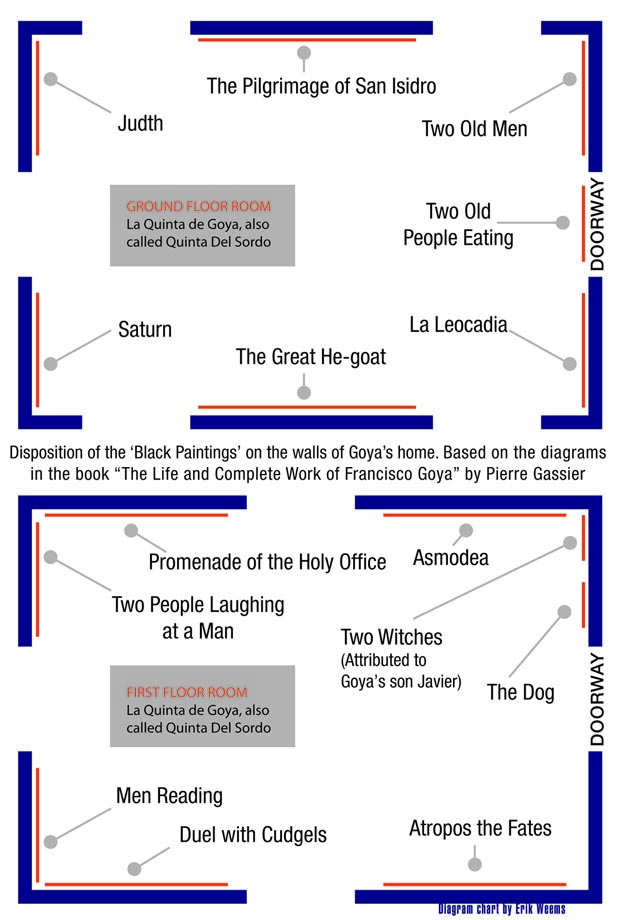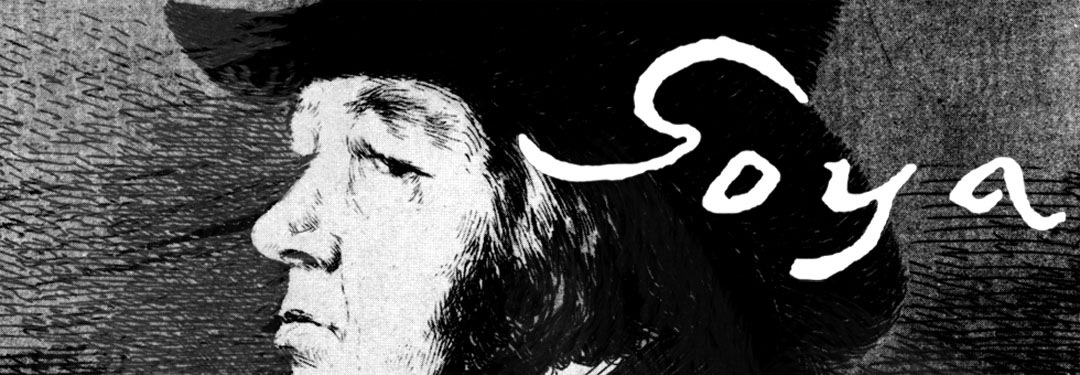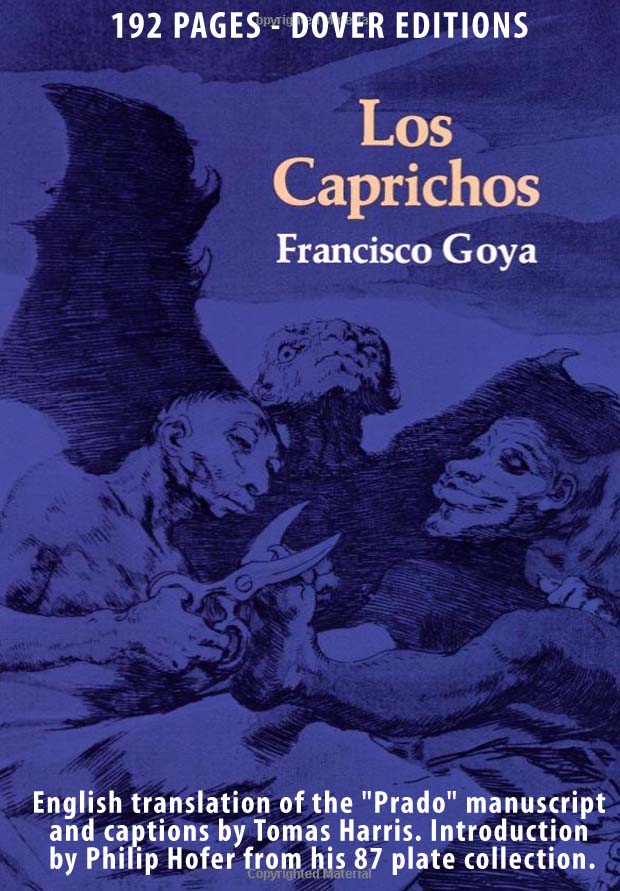The Black Paintings
Excerpted from the book GOYA by Xavier de Salas
Published 1978 by Mayflower Books, New York City.
Copyright © 1978 Arnoldo Mondadori
De Salas on Goya
De Salas' books Goya (Mayflower, 1978, translated from the Spanish) is in some ways a corrective for the numerous English language books on Goya that are perpetually being published due to the attention Goya is given with each new generation. De Salas pays attention to basics and works through the logic of some of the famous stories on Goya (for example the love affair with the Duchess of Alba) and comes to the safe conclusions: there's no evidence for the story. He does this with other tales of Goya (and if you've taken time to read much Goya biography, the stories can be quite dramatic, as if exaggerated for a Hollywood movie) and in a way, de Salas' Goya cools down these stories and brings to the reader a focus on what is known, what is possible, what is suspected, and what's simply not probable (or outright impossible).
"It is my belief that the anxiety and danger in which Goya lived during the years prior to 1820, and also in the years following the restoration of the King’s absolute power, were the reasons for his not having published them [referring to the etchings of Disparates], and that, in order to protect himself from any possible danger that might result from their interpretation, he only kept a series of proofs, to which he gave these vague titles, under the general heading of Disparates, so as to render them completely innocuous. They thereby became totally devoid of comment or criticism—mere ‘Disparates’—even though the initial purpose may have been to criticize actual deeds or events. Their meaning would only be apparent to those who knew his own hidden thoughts and opinions concerning the political situation of the time. The same spirit lay behind them as lay behind the paintings on the walls of the two rooms in his Quinta property: the ‘black paintings’, so called because of the dominance of that colour."
"...Personally, I am unconvinced by the various attempts to explain the two groups of paintings in terms of their philosophical and symbolic meaning, but there does undoubtedly exist a relationship between the different compositions, and in order to interpret them—to read them—we must examine precisely the way in which they relate physically one to another, both side by side and face to face."
Excerpted from the book GOYA by Xavier de Salas [Amazon]
Published 1978 by Mayflower Books, New York City.
Copyright © 1978 Arnoldo Mondadori

GOYA NEWS ARCHIVE
Goya's the "Black Paintings"
La Quinta de Goya – Goya's home in Spain and location where he made the Black Paintings
Writings about the Black Paintings
De Salas on the Black Paintings
AMAZON
Goya The Terrible Sublime - Graphic Novel - (Spanish Edition) - Amazon
"From this headlong seizure of life we should not expect a calm and refined art, nor a reflective one. Yet Goya was more than a Nietzschean egoist riding roughshod over the world to assert his supermanhood. He was receptive to all shades of feeling, and it was his extreme sensitivity as well as his muscular temerity that actuated his assaults on the outrageous society of Spain." From Thomas Craven's essay on Goya from MEN OF ART (1931).
"...Loneliness has its limits, for Goya was not a prophet but a painter. If he had not been a painter his attitude to life would have found expression only in preaching or suicide." From Andre Malroux's essay in SATURN: AN ESSAY ON GOYA (1957).
"Goya is always a great artist, often a frightening one...light and shade play upon atrocious horrors." From Charles Baudelaire's essay on Goya from CURIOSITES ESTRANGERS (1842).
"[An] extraordinary mingling of hatred and compassion, despair and sardonic humour, realism and fantasy." From the foreword by Aldous Huxley to THE COMPLETE ETCHINGS OF GOYA (1962).
"His analysis in paint, chalk and ink of mass disaster and human frailty pointed to someone obsessed with the chaos of existence..." From the book on Goya by Sarah Symmons (1998).
"I cannot forgive you for admiring Goya...I find nothing in the least pleasing about his paintings or his etchings..." From a letter to (spanish) Duchess Colonna from the French writer Prosper Merimee (1869).
GOYA : Los Caprichos - Dover Edition - Amazon




